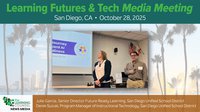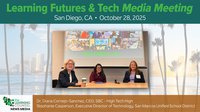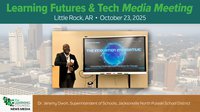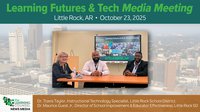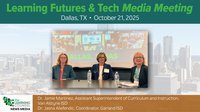While students need to be able to recall basic math facts, lessons can’t stop there. Educators should persist in teaching the deep relationship between numbers so that students can eventually solve problems in their own way. Students will become effective critical thinkers if they understand that struggle is a productive part of learning math.
Learning how to productively struggle not only prepares them for their next math class, it prepares them for their careers. The future job market is a mystery, so we've got to make sure our students can think for themselves. By encouraging students to productively struggle, creating a community of learners, and incorporating math talks, math teachers will help create a generation of independent thinkers.
Struggling is Productive
Math classrooms are changing by letting students productively struggle. Rather than encouraging them to get the correct answer quickly, educators are giving students the time they need to reason with mathematics. Most of the time, the teacher isn’t teaching strategy directly. The strategy is a natural outcome of the product. After students experience a few number strings, they are able to pick up on the patterns. From there, they can construct the path to reason about the numbers.
Creating a Community of Learners
Math isn’t black and white, but some ways of thinking are more beneficial than others. It’s an educator’s job to present a problem, allow students to strategize, and use tools to model that strategy for them. Creating a community of learners starts with valuing everyone’s abilities and voice. We want students to be comfortable sharing their answers and strategies.
According to research done by Pamela Weber Harris, students begin their journey to mathematical reasoning with counting strategies and perceiving numbers as 1, 2, 3. They eventually start thinking additively. With practice, students who are thinking additively about 8 + 7 are thinking 8 and 2 is 10, 5 more is 15. Or 7 and 7 is 14 and 1 more is 15. Rather than counting on their fingers from 8, they see numbers in chunks.
Once students advance, they are taught to think multiplicatively. Multiplicative thinking is seeing numbers in groups rather than chunks. Someone who's thinking multiplicatively about 6 x 7 is working through 6 x 6 = 36, plus another group of 6 is 42. Or, 7 x 5 = 35, plus another group of 7 is 42. After multiplicative comes proportional thinking and then functional reasoning. What happens sometimes, though, is that students get stuck in counting, which makes it hard for them to catch on in middle school when they are required to think proportionally and beyond.
When I was a teacher and asked students to put their answers on the board, I accepted all answers. In my experience, if some students’ answers were wrong and they then explained their path to that answer out loud to the class, nine times out of 10 they realized it and corrected their thinking in real time. I wouldn’t frown on a wrong answer because it presented an opportunity to try a new path. My mission was and is to help students comprehend the information by creating a safe environment where all learners can grow.
Incorporating Math Talks
The ultimate goal is to have students see a problem and be able to determine what strategy is best for those numbers. The problem is that the strategy happens in students’ minds and may not be reflected on their paper. Adding math talks to your classroom allows students to see different strategies that their peers are using. It also allows educators to see what paths students are taking and the ones they haven’t quite grasped.
If I threw out a problem like 7 + 8 in my classroom and one my students explained, “8 + 2 =10, and 5 more is 15,” that gave me one understanding of their strategy. If, on the other hand, I heard a student say, “I started at 8 and went 9, 10, 11, 12, 13, 14, 15,” I know that they could learn a more efficient strategy. To hone in on that skill, I would present a number string that illustrated that strategy. The idea of holding math talks is to help students gain number sense by watching and hearing their peers’ thought processes visually modeled and explained. After I have presented more number strings, I would do another math talk to see if they’d made changes to their path
Developing insight into the various ways one problem can be solved allows students to see numbers and decide the best solution for themselves. If done right, math talks don’t place pressure on students to get the right answer; they’re about brainstorming the most efficient path to an answer.
Brittany Goerig is a product manager at hand2mind and lead-author and co-creator of Daily Math Fluency. Before that, she was a K–5 mathematics consultant and an elementary and middle school teacher for 17 years.





